- You are here:
- Home »
- Mountain Bikes
Category Archives for Advice
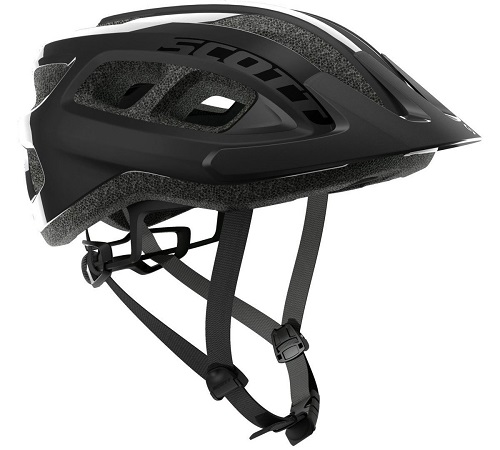
Scott Mountain Bikes and Accessories: A Complete Set-up Guide
For people of all ages, mountain biking is a fun and physically active hobby that allows you to experience quality time in the great outdoors while also staying in shape in the process. There are many different levels and types of mountain biking too, making it an attractive hobby for people with different abilities and interests. Mountain biking can be a languid, leisurely pursuit, or it can be an action-packed, adrenaline-filled extreme riding event, it all depends on your skill level and how you like to spend your free time.
Mountain biking is not just a hobby; it can become a way of life. Many people get really interested in mountain biking, wanting to take it beyond just a casual pursuit. For these individuals, building a personalized mountain bike from scratch is a great way to get a ride that is perfectly tailored to your build, as well as your wants and needs. Putting together your own mountain bike from a range of different parts can be confusing and even a bit intimidating, but it is the ultimate way to ensure that the bike you design is perfect for you.
In this guide, we provide a brief rundown on the basic construction of a mountain bike, as well as looking into some of the best Scott Mountain Bike accessories that you can use to customize your bicycle to your exact needs. Scott Mountain Bikes and Accessories is one of the most popular and trusted names in mountain biking equipment and related accessories, known for providing top of the line products at affordable prices, making them one of the most trusted names in biking. For that reason, we highly suggest Scott Mountain products and will briefly review some of the most popular accessories you can get to improve the comfort of your ride when on the road or trail.
How to Set-Up a Mountain Bike for Beginners
In order to make a custom bicycle for yourself, you do not need to be an expert and know everything at the bike shop, nor do you need to be highly adept at mechanical pursuits—you just need to like cycling. If you know what you are looking for, it isn't really that difficult to find the parts you need to create the ride you want and to put it all together takes only basic tools and a small amount of mechanical skill.
Most people, when customizing their mountain bike, either buy a basic bike that they can then add parts to, or start with a frame only. If you start with a frame, you will want to get a well-padded, comfortable seat, high-quality, all-terrain tires, and comfortable, sturdy grips.
The next big hurdle to making the bike exactly as you wish it to be is adjusting the different elements so as to be most comfortable with your height, weight, etc. First, you will want to adjust the saddle height. The saddle is the seat and you want your leg to be almost straight when parallel to the floor.
You will also want to set what is called the fore and aft position of your saddle. To do this, you sit on your bike with one foot parallel to the floor. Next, take a piece of string with a weight at the front of your knee. The string should be in line with the axle peddle. If it is not, you will need to adjust the saddle accordingly.
Next, you will want to set your handlebar height. What the correct height is for you will depend on the type of terrain you are riding on, the suspension travel of your bike, as well as what is most comfortable for you. It should be noted that the higher your handlebars are, the more comfortable a ride you get, but you are not in racing form, which can negatively impact your speed and control.
Scott Mountain Bike Accessories that Will Improve Your Comfort and Safety
Scott Mountain Bike and Accessories is a trusted and well-known maker of mountain bikes, as well as a wide range of accessories and related equipment. Here, we are going to focus on a few of their products that are designed to improve the comfort and safety of your ride, whether for leisure or as an extreme sport.
Scott MTB Pro Bike Shoes
Scott makes a wide range of professional quality bike-related products, including high-quality professional mountain biking shoes like their MTB Pro Bike Shoes. At about $130, these are affordable, performance-oriented shoes for the serious mountain biker.

They are lightweight, made from microfiber and 3D nylon air mesh. They also feature a ratcheting buckle closure as well as 2 hook and loop straps, providing a snug, solid fit. The sole is fiberglass reinforced nylon and the cleat is compatible with a 2 bolt MTB.
Scott Sports Men's Aspect Short Finger Cycling Gloves
Scott also features some top-of-the-line biking gloves that are perfect for both novice and professional riders alike. Their Aspect short finger gloves are a great deal at around $20 a pair.
Available in six different colors, these gloves provide a strong grip, but still allow you the dexterity of riding with bare hands. They are lightweight and breathable, making them perfect for riding in hot weather.
Scott Supra Bike Helmet
Scott also makes a wide range of different helmets for mountain bikers. A great all-purpose helmet that is suitable for riders across all skill levels is their Supra Bike Helmet, available at for about $40.

The shell is made from in-mold polycarbonate and the impact foam is made from EPS. There are multiple ventilation vents allowing for breathability as well as a visor which can help keep the sun out of the rider's eyes.
Mountain biking is an action-packed pursuit that is a fun and unique way to spend your free time and stay in shape. Constructing and adjusting a mountain bike to meet your exact needs and desires is the best way to get the most out of this endeavor. Most bikes, even if you buy a pre-built model, allow for a range of customizations that will create a more comfortable and stable ride. In this guide, we touched briefly on the main adjustments that need to be made to make the bike more comfortable. We then provided short reviews on just a few pieces of Scott Mountain Bike accessories that help improve both the safety and comfort of your ride.
Gary Fisher Bikes: Are Gary Fisher Bikes Still Considered Good?
If you are familiar with the world of mountain biking, you'll know that the Gary Fisher collection is far more than a mere bicycle brand. He's thought of by some as the "godfather" of mountain bikes. After all, he was the one who came up with the name 'mountain bike' and evolved the concept of biking off road.
Description
Nowadays, Gary Fisher still remains one of the most recognizable names in the mountain biking world. If you take your mountain biking seriously and are active enough, you've definitely seen at least several Gary Fisher Mountain Bikes roar by. Although they are no longer being manufactured, they are still considered top of the line when it comes to mountain bikes.
Gary Fisher mountain bikes are now under Trek and are called the Gary Fisher Collection. They have a history going back several decades.
Fisher himself was at the helm of the company from the 1970s into the 90s when it came upon a few bumps in the road and was consequently taken over by Trek. Presently, the partnership that exists between Trek and Fisher is unusual, being one that seems ideal for both parties. Trek manages the daily business and governs any investing in new technology or materials. This arrangement allows Fisher to do what he is famous for besides bike racing: Create and produce innovative designs that keep changing the standards of the industry.
Gary Fisher mountain bikes can be relied upon to have excellent specs and frames when placed side by side with other non-budget brands and plenty of bicycle shops carry them because of this. Fisher bikes have a geometry that’s quite unlike other accepted designed brands and when you first experience it, you will need some time to get accustomed to the feel.
It's highly recommended that you go to a professional bike shop for a fitting and trial ride before you choose this bike as the brand for you. However, once you get used to the Genesis and Genesis 2 geometry, which partners slow speed agility with stability at fast speeds, it's likely that you won't regret purchasing this bike.
Be forewarned, though, that some riders do say that the bikes are somewhat twitchy. On the other hand, others declare that they appear to handle line changes more smoothly going either uphill or downhill. The main theory behind Genesis Geometry is to raise the fork offset, so the position of your hand moves back and thus weights the front part of the bike better.
Back in 2002, Fisher moved into 29" bikes and apparently gave the 26" market to Trek. The concept behind having larger wheels is to provide a swifter, more stable, and easier ride. While Gary definitely wants to be the leader in the 29" field, he's now also involved with road biking and has been designing new bikes in that area. The Fisher line further builds a hybrid, commuter/lifestyle, cycle cross and bikes for kids.
Testing innovative designs like the first suspension system for bikes is a Fisher trademark. He tried out the use of tandem drum brakes, motorcycle brake levers, thumb shifters, and cables, the uni-crown fork, and a whole host of other ideas.
As for Fisher today, he shows no signs of slowing down. He still races and was inducted into the Mountain Bike Hall of Fame, and named the "Founding Father of Mountain Bikes" by Smithsonian magazine in 1994. He also does talent scouting for the company in the sport of mountain bike racing.
29er Models
Gary Fisher Bikes introduced the 29er mountain bike to their line-up in 2002 and in the years since have worked to obtain a better response time and improve low-speed handling. These things are frequently problematic when it comes to these bikes with bigger wheels.
These bikes feature the G2 geometry that shrinks the handlebar reach and the size of the cockpit, which helps improve the fit difficulties that are a major problem for riders of smaller stature who want to purchase a 29er.
Here are some characteristics of the Gary Fisher 29er mountain bikes:
- G2 geometry
- Less cockpit size
- Lightweight—for instance, the Superfly 29er mountain bike comes with a carbon frame
- Wider rims for more strength and stiffness
- Several material options to choose from for the frame, such as butted and hydroformed aluminum, True Temper OX Platinum, and carbon
- Full-suspension, hardball, and single speed choices
GarFisher also produces three full suspension mountain bike 29ers:
- Superfly 100 – This is a 29er with an extremely lightweight carbon full suspension
- HiFi 29er – This 29er is another version of the Superfly, but this time using aluminium.
- Rumblefish 29er – This is a technical full suspension trail bike
Gary Fisher mountain bikes also have among their 29ers a group of hardtailers:
- Superfly Hardtail – Carbon frame with an option for single speed
- Paragon – Hardtail for racing with aluminum alloy
- X-Caliber – Good for either racing or trails it also has aluminum alloy
- Rig Single Speed – One more single speed choice, but this time in an aluminum alloy frame
- Cobia -- Cheaper 29er hardtail
- Mamba -- Entry Level 29er hardball
So, while like Gary Fisher himself, the Gary Fisher brand hasn't gone away; it has now become a classic and still has fans worldwide. Most bicycle shops still sell the Gary Fisher mountain bikes and there is still a rock solid customer base for them. People even purchase them on eBay or directly from sellers online if not for themselves then to initiate their children into the Gary Fisher fan club.
Things at the company may not be like they used to be, but it was worth all the energy and effort that was expended to turn this into a top brand. Now it will live on and certain bikes have already become collector's items.
With new fans coming onto the bandwagon every day and old fans that stay loyal and true, this brand will be around for a long time yet. And it deserves to be because it still ranks among the best mountain bikes ever created.
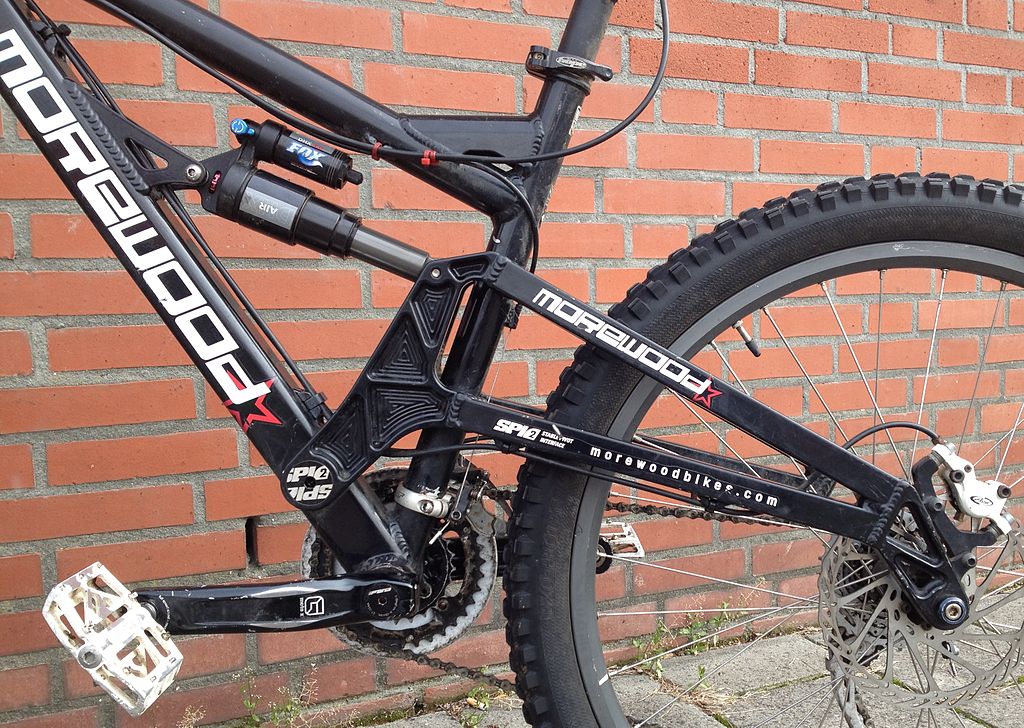
Dual Suspension Mountain Bike: Dual Suspension or Rigid Mountain Bikes for Beginners
You want to start cross country mountain biking or need a downhill mountain bike and you are looking for the best deal in your price range. However, you’ve got to be careful when choosing a mountain bike if you’re just getting started. You must have a model that is easy to control and can handle shocks.
However, there are many factors that go into such bikes. Do you require an aluminum frame or steel mountain bike frame, durable wheels and tires, need a specific wheel size, rear shocks, rigid forks, a hardtail, disc brakes, looking for a specific suspension design… the list is endless. You can’t just pick one type of bike and assume that it will work perfectly for you every step of the way.
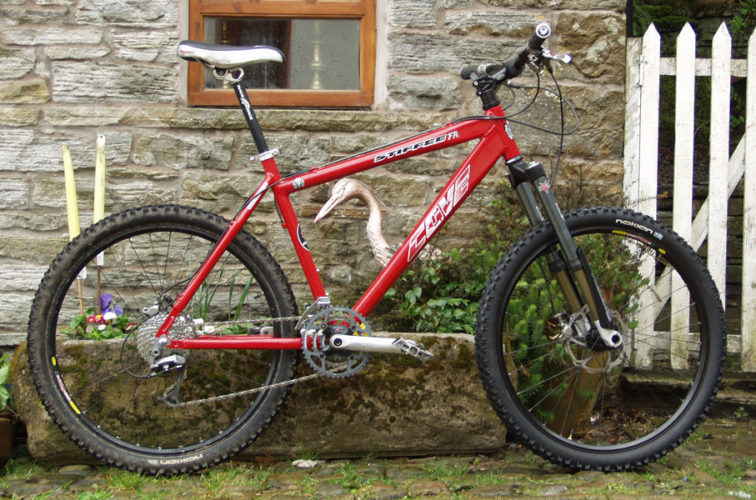 When choosing a great bicycle, however, you have to look carefully at the type of mountain bike and how it is designed. You can opt for a dual suspension or rigid mountain bike. These are divided up mainly based on the suspension features that they come with. Each option has its own advantages over the other.
When choosing a great bicycle, however, you have to look carefully at the type of mountain bike and how it is designed. You can opt for a dual suspension or rigid mountain bike. These are divided up mainly based on the suspension features that they come with. Each option has its own advantages over the other.
Even with the great choices out there for mountain biking in your price range, you have to be cautious when choosing something for your ride. The one that is right for you will vary based on the specific demands you hold for your ride, as well as the types of trails you will take your bike out on. While neither the dual suspension nor the rigid style is truly better than the other, the application for your ride should make all the difference in your decision.
What Is a Rigid Bike?
A rigid mountain bike is also known as a hardtail bike. This is designed with a shock-absorbing suspension around the front fork.
Such a bike works with a lightweight design. It is easy to lift up and propel in many spots. It also has a smoother steering feature that responds quickly. If used carefully enough, it should not be tough to use on a gentle path. It’s also great if you’ve got a wide-open space for traveling.
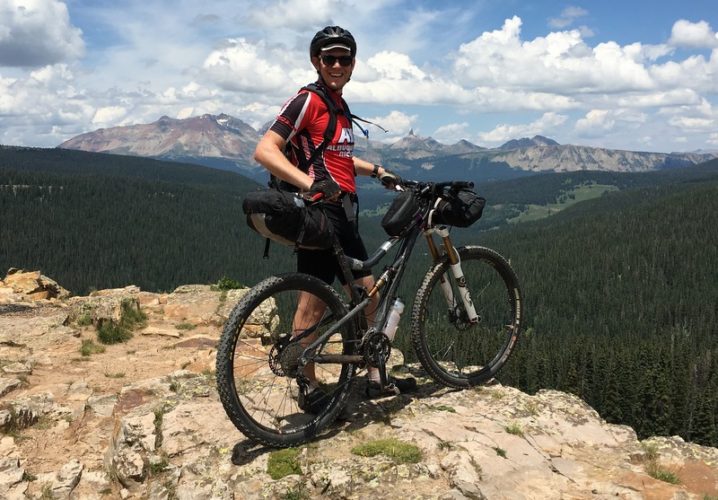 Also, a rigid bike can handle some obstacles. It works better on lighter obstacles like small rocks or even some tree roots. You don’t want to take it over any extremely rugged surfaces, though.
Also, a rigid bike can handle some obstacles. It works better on lighter obstacles like small rocks or even some tree roots. You don’t want to take it over any extremely rugged surfaces, though.
A rigid bike uses a singular piece in its frame. This creates a slightly triangular shape. The rear wheel is in a proper set place so it remains stable. It also creates a stronger surface when used right.
What Is a Dual Suspension Bike?
As the name suggests, a dual suspension bike uses two different suspension setups. It offers separate suspensions on the front fork and back areas.
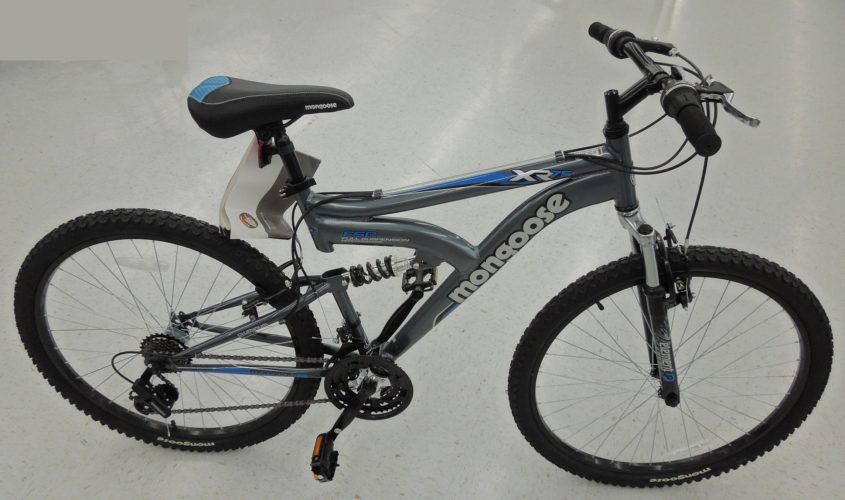 By taking in more shocks, this works better on rougher routes. It also handles obstacles like larger rocks or wet spots quite well.
By taking in more shocks, this works better on rougher routes. It also handles obstacles like larger rocks or wet spots quite well.
This bike uses two pieces on its frame. They are connected by a series of pivots. These help to keep the ride steady and without being too bumpy. The two sections can move independently from each other. The separate suspension features on both halves make this possible.
How Intense Will Your Ride Be?
When choosing one of these bikes, you have to think about how intense or rough your mountain trail ride will be. A rigid bike is better if you have a lighter or smoother trail. A dual suspension bike works best if you have a rougher ride planned.
 A dual suspension choice is also great if you have a slight downhill slope to work with but is not too intense to where you might need a separate downhill bike.
A dual suspension choice is also great if you have a slight downhill slope to work with but is not too intense to where you might need a separate downhill bike.
What Support Do You Require?
The amount of support you need while sitting on your bike is crucial to your riding success. You can choose a rigid bike if you don’t feel pain regularly while pedaling.
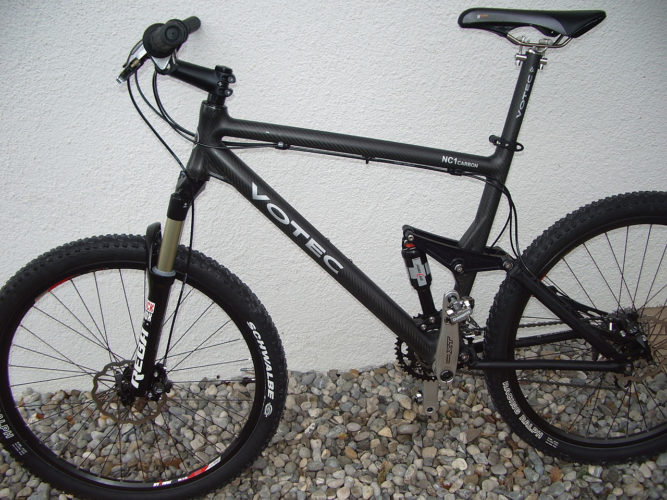 Meanwhile, a dual suspension bike is better for people with back issues. It offers a bit of extra support for those who are sensitive to the shocks they might experience while riding.
Meanwhile, a dual suspension bike is better for people with back issues. It offers a bit of extra support for those who are sensitive to the shocks they might experience while riding.
What About Drops?
Drops often occur on a trail when you go from one surface to another in a short period of time. A dual suspension bike will work best if you have a downhill ride with plenty of drops all around. This kind of bike takes in drops and shocks with ease.
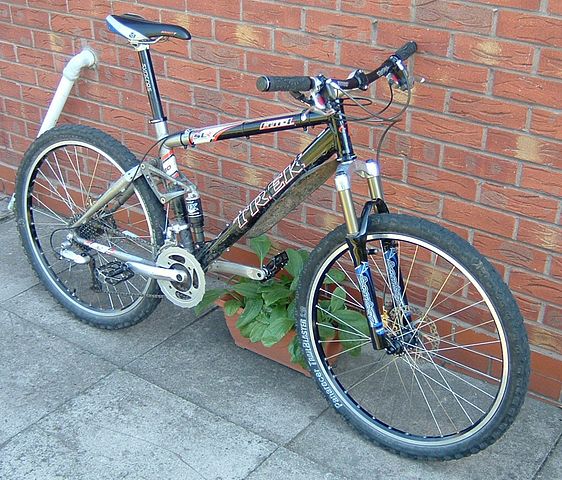
What About Going Uphill?
A rigid bike is better if you want to get uphill. A rigid bike makes it easier for you to propel it as the bike often comes with a lighter weight. It also responds well to the twists and turns you might come across as you pedal uphill.
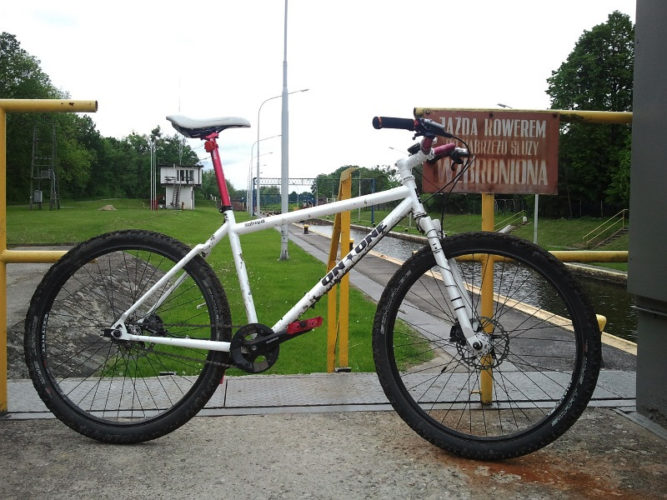 The pedals on a rigid bike typically require less pressure for them to move. This is crucial when you’re trying to get up a good incline. Considering how an uphill ride might be a little more predictable in terms of what you’d find on the trail, a rigid bike will work perfectly. You won’t be at risk of running into unexpected surfaces all that quickly.
The pedals on a rigid bike typically require less pressure for them to move. This is crucial when you’re trying to get up a good incline. Considering how an uphill ride might be a little more predictable in terms of what you’d find on the trail, a rigid bike will work perfectly. You won’t be at risk of running into unexpected surfaces all that quickly.
What About Maintenance?
A rigid bike clearly requires less maintenance. It doesn’t have as many moving parts on it. Still, you should check on the gears on the bike if necessary. Different gears can create various levels of pressure but they can also support faster speeds provided that you switch from one gear to the next in enough time.
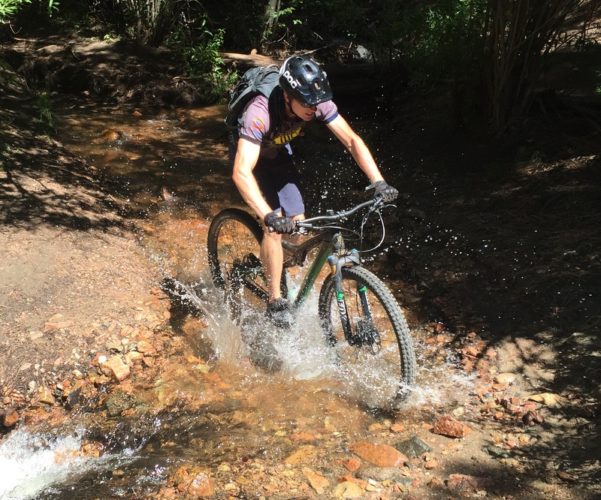 Meanwhile, a dual suspension bike needs regular maintenance of its links and pivots. The rear shock also requires new seals on occasion. You might have to replace such a seal once a year. Such a bike can be found in a multi-speed or single-speed variant but either one will have to be maintained properly. You might have to lubricate the multi-speed gear shifter once a year to keep it from locking up.
Meanwhile, a dual suspension bike needs regular maintenance of its links and pivots. The rear shock also requires new seals on occasion. You might have to replace such a seal once a year. Such a bike can be found in a multi-speed or single-speed variant but either one will have to be maintained properly. You might have to lubricate the multi-speed gear shifter once a year to keep it from locking up.
Summary
In conclusion, you should think carefully about your riding style and trails you will head out on when figuring out which bike is right for you. A rigid bike is perfect for uphill rides or ones that don’t entail many rough surfaces.
A dual suspension model works better if you are sensitive to shocks or you’re going either down on the slope or around a rugged surface. Check on your needs for a bike before heading out on the trail so you’ll have a choice that fits in perfectly with your needs.
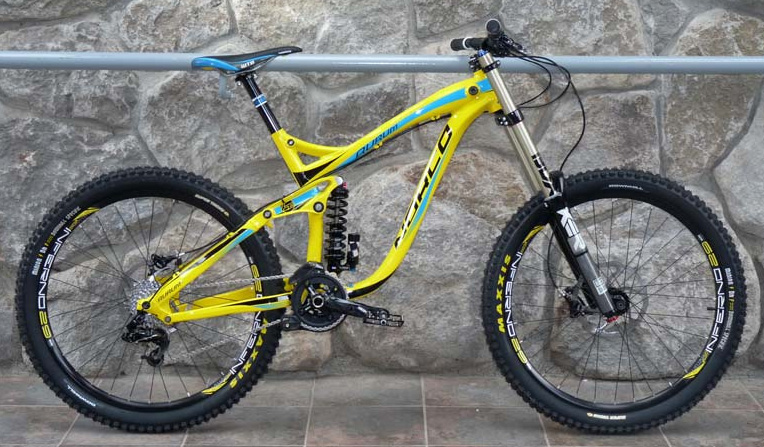
Hardtail vs. Full Suspension Bike
Which Bike Should You Choose?
Mountain bikers looking to invest in a new set of wheels have to make a decision between a hardtail mountain bike and a full suspension frame bike for cross country and rough terrain. The question of which bike you should choose depends on your intended usage, your environment, and, of course, your budget. A hardtail bike versus a full suspension bike presents more straightforward engineering design elements in its construction. However, full suspension bikes offer an added level of shock absorption but there is more intricate engineering, which can become damaged or fail more easily. For those setting out on the quest of finding the right mountain bike, here is a hardtail vs. suspension bike guide to help you decide which bike you should choose.
Basic Differences of Hardtail vs. Full Suspension
The question of which bike you should choose comes down to your preferences regarding your bicycle riding tendencies. If you are a mountain biker who prioritizes weekend trail rides and purely recreational usage, your needs may be different than a those of a rider who is more akin to long rides on varied terrain.
Hardtails
Hardtail mountain bikes sport a solid, one-piece frame, which includes a suspension fork that is mounted on the front of the bike. The back of the bike does not feature a suspension fork. This is where the name “hardtail” comes from. Hardtail bikes feature only one suspension fork, giving the rear end or tail of the bike a hard feeling.
Full Suspension
Mountain bikes, classified as full suspension bikes, also feature the front suspension fork, as on a hardtail mountain bike. However, in addition to the front suspension fork, they also feature a rear suspension fork. The design engineering that goes into making a full suspension bike incorporates two separate frame pieces, shaped as triangles, which are joined together by pivots. Shock absorbers act to control the two pieces rate of motion while the pivot joining works to allow the bike’s frame to be more versatile on varied terrain.
Hardtail vs. Full Suspension Bike Features and Specs
The best bike for you depends on many things, including your individual predilections toward biking. What kind of ride are you looking for? Each frame type has its own pros and cons for riders and individual areas in which the bike type excels and falls short. So, let's get into the nitty gritty to assist in the decision of which bike you should choose.
Mountain Bike Frame

The complication and intricacy of your bike’s frame design will dictate the price bracket for in which it resides, as well as the reliability of the bikes construction. For the best full suspension bikes, you will expect to pay quite a bit more than for an equivalent hardtail model. That being said, a full suspension bike is most certainly more comfortable to ride on rough trails but you are going to feel it in your pocketbook.
A full suspension mountain bike frame needs to be able to shift the shock absorption of the frame through the pivot point to disperse the shock load. On top of the added complexity and cost in a full suspension bikes design and manufacturing, this bike type also comes with a sacrifice in durability. The more connection points there are, the weaker the bond. Shock and physical stress on the frame can weaken the bonds over time and riders will find it necessary to have the bikes pivot repaired or replaced, from time to time. Of course, the frequency of this work will depend on the amount of usage you give to the bike and the stress that it encounters on rides. Those living in the Rocky Mountains will have to be incredibly attentive to the state of wear on their frame, compared to those who ride a hardtail.
Hardtail mountain bikes make for a bumpier ride and require a rider to act more as their own rear shock absorber. This might entail lifting one's butt off of the bike seat often when going over rough terrain and bumps. That hardtail frame will often be much lighter than that of its full suspension counterpart, due to the mitigated need for extra hardware in the form of a shock absorber and pivot connector.
Which Bike Should You Choose?
Hardtails are more difficult to ride on rough trails, especially for beginners to the world of trail riding and off-road biking. That being said, what hardtails lack in suspension, they more than make up for in the quality of their additional components, such as the drivetrain, suspension fork, wheels, and tires. However, if you don't mind the added weight and maintenance required, a full suspension bike will offer riders a more immediately enjoyable and softer ride, but with the added convenience comes a markup in the price tag.
For Beginning Mountain Bikers
It comes down to this: If you have a large budget and are a beginner, you will most definitely want a high-quality full-suspension bike. If you are working with a small budget and you are a beginner, you might want to consider a hardtail. Beginners to the mountain biking scene will find great value in the ability to ride for a longer time span, without feeling the bodily stressors of low shock absorption. However, many beginners will likely benefit more from learning to ride a hardtail efficiently and can find a better hardtail bike for less money than an equivalent full suspension bike.
For Expert Mountain Bikers
If you are an expert rider with a big budget, the best full suspension bikes on the market offer riders the greatest versatility and range. However, those taking their full suspension bike on prolonged, rough journeys will likely find it necessary to become versed in the upkeep and maintenance of their full suspension bike while on the trail. If you are an expert with a small budget, however, the best hardtail mountain bikes on the market will offer a greater life longevity and low maintenance. Your hardtail will last you more years than you can ride it.
